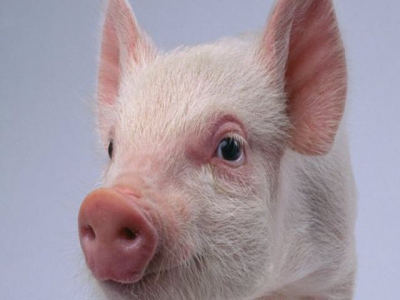Research to study effects of topsoil exposure on swine gut microbiome

A University of Arkansas System Division of Agriculture researcher’s efforts to understand how exposure to topsoil affects the gut microbiome and feed efficiency in pigs have earned him a $500,000 grant from the U.S. Department of Agriculture.
The grant from USDA's National Institute for Food & Agriculture was awarded to Jiangchao Zhao, assistant professor of animal science at the university's Dale Bumpers College of Agricultural, Food & Life Sciences and researcher for the Arkansas Agricultural Experiment Station.
Zhao’s proposal focused on the underlying mechanisms of topsoil exposure in early life that changes the swine gut microbiome and increases postweaning feed efficiency, the announcement said.
“The switch from outdoor rearing to indoor rearing increased the profit for swine producers but decreased the pig’s chance to be exposed to the environment, which likely led to the decrease in swine gut microbial diversity,” Zhao said. “Since the gut microbiome plays important roles in almost every aspect of animal health and nutrition, such a decrease in gut microbiome diversity is likely associated with the high morbidity and mortality rates in some modern farms.
“This is similar to the human modernization process,” he said. “When humans move to big cities, increase antibiotic intake and decrease bacteria exposure, they have been losing many important bacterial species, which have been associated with increased chronic diseases.”
To provide the pigs with exposure to an outdoor environment, the project incorporated a novel topsoil exposure model mimicking such an environment.
Piglets exposed to top soil during lactation had significantly greater gut microbiome diversity, followed by remarkable improvement in growth performance and feed efficiency postweaning,” Zhao said. “We hypothesize that this short-term topsoil exposure improves feed efficiency through modulation of the gut microbiome.
“We are working to identify the beneficial bacteria enriched by topsoil exposure that will decrease postweaning stress levels and increase feed efficiency,” Zhao added.
Feed costs account for 60-70% of swine production, precipitating the need for and relevance of studies looking into increasing feed efficiency. The necessity for this study pushed up Zhao’s proposal to be ranked fourth out of 100 proposals.
The $500,000 award will fund Zhao’s research study for four years.
Related news
 Denmark: Improved piglet survival focus of industry and academic tie-up
Denmark: Improved piglet survival focus of industry and academic tie-up If sows are fed within the last three hours before farrowing, they will repay with a shorter farrowing time and considerably fewer stillborn piglets
 Is a hammer or roller mill better for pig feed structure?
Is a hammer or roller mill better for pig feed structure? Understanding what milling processes can achieve optimal particle size of diets for pigs was the objective of a recent review by Serbian and Spanish researchers
 Novel method to monitor blood flow in pregnant sows
Novel method to monitor blood flow in pregnant sows Scientists developed new ultrasound method to monitor umbilical blood flow in the pig at multiple stages of pregnancy.